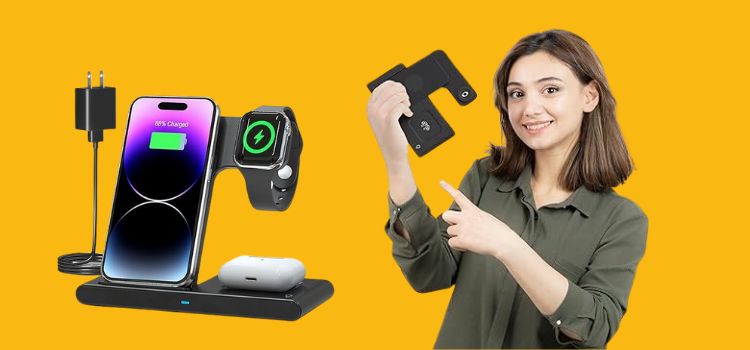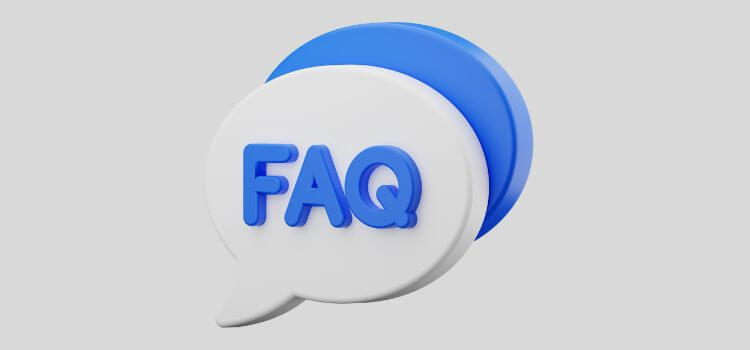As an Amazon Associate, I earn from qualifying purchases.
If you are a wireless phone charger user or thinking about using one, you need to know how a wireless phone charger works. Wireless phone charging, or inductive charging, has revolutionised revolutionised how we power our devices. Gone are the days of tangled cords and broken charging ports. Instead, we now have sleek and efficient wireless chargers that offer convenience and simplicity. But how exactly do these devices work? This article will delve into the principles, technology, and various aspects of wireless phone chargers to provide a comprehensive understanding.
The Basics of Wireless Charging

Electromagnetic induction is the foundation of wireless charging. This process involves transferring energy between two objects through an electromagnetic field. In the context of wireless phone chargers, these two objects are the charger itself and the phone.
Key Components
- Transmitter (Charging Pad): This is the surface where you place your phone. A wire coil inside produces an alternating electromagnetic field when an electric current flows through it.
- Receiver (Phone): The phone must have a built-in or attachable receiver coil to convert the electromagnetic field back into electrical energy, which then charges the phone’s battery.
The Science Behind Wireless Charging
1. Electromagnetic Induction
The core technology behind wireless charging is electromagnetic induction, a principle discovered by Michael Faraday in the 19th century. Here’s how it works in wireless charging:
- Generating the Electromagnetic Field: When you plug the wireless charger into a power source, an alternating current (AC) passes through the coil in the charger. This current generates an alternating electromagnetic field around the coil.
- Transferring Energy: The electromagnetic field causes the receiver coil in a phone to produce an alternating current when the phone is put on the charging station.
- Rectification: The phone’s internal rectifier circuit converts the alternating current induced in the receiver coil into direct current (DC), which is then utilised to charge the battery.
2. Types of Wireless Charging
Wireless charging technologies come in many forms. However, the following are the most widely used ones:
- Inductive Charging: Inductive Charging is the most commonly used method and is employed in most consumer wireless chargers. It uses tightly coupled electromagnetic induction between the transmitter and receiver coils.
- Resonant Charging: This method uses resonant inductive coupling, allowing for more significant distances between the charger and the device. It is less common in consumer electronics but is being explored for applications like electric vehicle charging.
- Radio Frequency (RF) Charging: This technology uses radio waves to transfer energy. It’s still in the early stages of development and is not widely available for consumer use.
3. Advantages of Wireless Charging
Wireless charging offers several benefits:
- Convenience: Place your phone on the charging pad, and it starts charging. There’s no need to constantly plug and unplug cables.
- Reduced Wear and Tear: The risk of wear and tear on charging ports and cables is minimized without physical connectors.
- Safety: Wireless chargers are designed with multiple safety features to prevent overheating and overcharging, reducing the risk of battery damage.
4. Disadvantages of Wireless Charging
However, there are also some drawbacks:
- Efficiency: In general, cable charging is more efficient than wireless charging. Heat is released during the energy transfer process.
- Speed: Regarding fast-charging technologies, wireless charging is generally slower than conventional charging.
- Alignment: Proper phone and charging pad alignment is necessary for efficient charging. Misalignment can lead to slower charging speeds or no charging at all.
4. Standards and Compatibility
The wireless charging industry is governed by several standards to ensure compatibility and interoperability between devices and chargers.
Qi Standard
The Qi (pronounced “chee”) standard is the most extensively used wireless charging standard. Developed by the Wireless Power Consortium (WPC), it ensures that any Qi-certified device can be charged using any Qi-certified charger, promoting a universal wireless charging ecosystem.
5. The Future of Wireless Charging
Wireless charging technology continues to evolve, with several exciting developments on the horizon:
- Increased Efficiency: Researchers are improving wireless charging efficiency to reduce energy loss and increase charging speeds.
- More extended Range: Future wireless charging systems may allow for greater distances between the charger and the device, enabling more flexible and convenient charging solutions.
- Integration into Everyday Objects: Wireless charging technology is being integrated into furniture, vehicles, and public spaces, making it even more accessible and convenient.
How to Use a Wireless Charger
Although using a wireless charger is simple, there are a few pointers to make sure it works as best as possible:
- Choose a Compatible Charger: Ensure your phone is compatible with the wireless charger. Most modern smartphones support the Qi standard, but it’s always good to check.
- Positioning: Place your phone directly on the centre of the charging pad. Proper alignment is crucial for efficient charging.
- Remove Obstructions: Remove any metal objects or thick cases from your phone, as these can interfere with the charging process.
- Monitor Charging: Keep an eye on your phone while it charges. Some wireless chargers have LED indicators to show the charging status.
Wireless Charging in Different Environments
1. At Home
Wireless charging is particularly convenient at home, where you can strategically place charging pads on your bedside table, desk, or living room. This allows you to charge your phone effortlessly throughout the day.
2. In Vehicles
Many modern vehicles come equipped with built-in wireless charging pads. These are especially useful for charging phones for navigation or hands-free calls.
3. In Public Spaces Wireless Phone Charger Work
Wireless charging stations are increasingly common in public spaces such as airports, coffee shops, and hotels. This makes it easier to keep your phone charged while on the go.
4. Maintenance and Care
To ensure the longevity of your wireless charger, follow these maintenance tips:
- Keep it Clean: Dust and debris can interfere with the charging process. Regularly clean the charging pad and your phone’s back.
- Avoid Overheating: Place the charger in a well-ventilated area to prevent overheating. Do not cover the charging pad with objects while in use.
- Use Original Accessories: Whenever possible, use the charger and cables that came with your device. Third-party accessories may not always provide optimal performance.
Troubleshooting Common Issues
Wireless charging is generally reliable, but you might encounter some issues. Here are common problems and their solutions:
- Phone Not Charging: Ensure proper alignment between the phone and charging pad. Check for any obstructions and ensure the charger is plugged in.
- Slow Charging: Wireless charging is typically slower than wired charging. However, if it’s prolonged, ensure your phone supports fast wireless charging and use a compatible charger.
- Overheating: If your phone or charger becomes excessively hot, remove the phone and let both devices cool down. Overheating can be caused by misalignment or obstructions.
Environmental Impact on Work Wireless Phone Charger
Nonetheless, environmental issues are still associated with the manufacture and disposal of electronic equipment. Here are some considerations:
- Energy Efficiency: Wireless chargers are becoming more efficient but consume more energy than wired chargers. Innovations in this area are aimed at reducing energy consumption.
- E-Waste: As with any electronic device, disposing of old chargers responsibly is crucial. Programs for recycling can lessen their adverse effects on the environment.
Final Thoughts for Wireless Phone Charger Work
Wireless phone chargers offer a convenient and efficient way to keep your devices powered up. You can make the most of this innovative solution by understanding the principles of electromagnetic induction and the technology behind wireless charging. As technology develops, we may anticipate even more significant efficiency, range, and integration improvements, making wireless charging necessary in our daily lives.
Embrace the future of charging and enjoy the convenience of a cable-free experience with wireless phone chargers. Whether at home, in your car, or on the go, wireless charging is here to make life simpler and more connected.
Frequently Asked Questions (FAQs)

What is wireless charging, and how does it work?
Devices can be powered wirelessly, eliminating the necessity for physical wires. The electromagnetic induction principle underlies its operation. A wireless charger (transmitter) generates an electromagnetic field through a coil when plugged into a power source. When a compatible device (receiver) with a built-in coil is placed on the charger, the electromagnetic receiver coil experiences an electrical current due to the field. The phone converts this current into direct current (DC), which charges the battery.
Is wireless charging safe for my phone’s battery?
Yes, wireless charging is safe for your phone’s battery. Wireless chargers are designed with multiple safety features to prevent overheating and overcharging. Most wireless chargers adhere to the Qi standard, which includes stringent safety measures to protect your device. However, using Qi-certified chargers and adhering to the manufacturer’s is recommended to follow instructions to ensure optimal safety and functionality.
Can I use my phone while it’s charging wirelessly?
You can indeed keep using your phone as it charges wirelessly. However, phone use can slow the charging process and generate additional heat, especially for resource-intensive activities like gaming or video streaming. Minimizing phone usage while on the wireless charging pad is advisable for the best charging efficiency.
Do I need to remove my phone case for wireless charging?
It depends on the thickness and material of the phone case. Most wireless chargers can charge cases as thin as 3-5 mm. However, cases made of metal or with metal components can interfere with the charging process. If you charged, see if taking the case off fixes the issue. It’s always best to check the specifications of both your phone case and charger.
Why is my phone charging slowly on a wireless charger?
Because of the inherent energy loss in the wireless transfer technique, wireless charging is typically slower than conventional charging. If your phone is charging unusually slowly, it could be due to several reasons:
- Misalignment between the phone and the charger’s coils.
- The charger might not support fast wireless charging.
- Obstructions or cases that interfere with the charging process.
The phone or charger may be overheating. Ensure proper ventilation and avoid using the phone extensively while charging wirelessly. Use a Qi-certified charger that supports fast charging and ensure your phone is correctly aligned on the pad.
Amazon and the Amazon logo are trademarks of Amazon.com, Inc, or its affiliates.